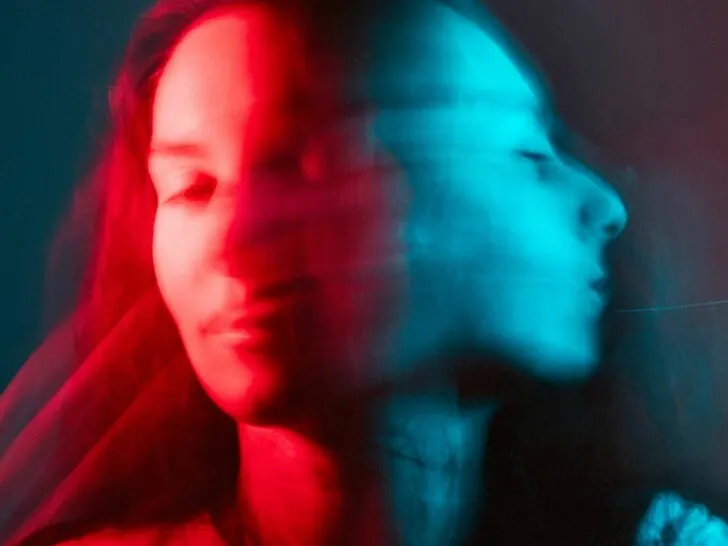When a child faces trauma such as mental or physical abuse outside the window of its tolerance, his personality doesn’t develop properly leading to a disturbed pattern of behavior in personality. These disorders fall under the term “dissociation” and are known as DID(Dissociative Identity Disorder) or OSDD (Other Specified Dissociative Disorder).
Instead of developing one proper personality, this phase leads them towards forming several personalities that we call alters.
It’s worth mentioning that people with DID don’t remember things due to memory blocks. The brain creates these amnesia barriers to protect a person from the trauma. For instance, there are two alters, Linda and Lily. Linda will not know what happened while Lily fronted and vice versa.
1A and 1B are the types of OSDD. Let’s see what similarities or differences they hold.
Let’s jump into it.
Comparative Analysis of DID and Two Types of OSDD
A person with OSDD-1 doesn’t fall under the criteria of DID. Having no distinction between alters indicates that a person has OSDD-1A while still having amnesia. But OSDD-1B means a person has differentiated personalities however there’s no amnesia.
This article intends to do a comparative analysis of DID with two types of OSDD. Also, I’ll be sharing some important terms that would make everything easier for you.
What Is A System?
Data from research conducted on Chinese Adults shows that childhood trauma leads to developing stress, improper personality, anxiety, and depression. From the system what I mean is a collection of alters. To put it simply, it’s a collection of different personalities that your consciousness creates.
These are the different types of systems:
- DID (Dissociative identity disorder)
- OSDD (Otherwise specified dissociative disorder)
- UDD (Unspecified dissociative disorder)
Keep in mind that there’s always some kind of trauma behind the development of the system.
Are Alters Separate People?
The best definition of alter, in my perspective, is different personalities created by the brain. In some systems such as DID, these personalities are distinct. In OSDD-1A, they’re not.
Now, the question is if alters are separate people.
People with dissociative disorders have one body and brain but different consciousness. Based on their consciousness, alters are different people therefore, they ususally like to be treated differently. However, not all alters like to be treated differently. It varies from person to person. So, it’s really important to communicate with such people to know how they want you to perceive and deal with them.
For example, some alters are younger than their bodies. Their mood and behavior also vary. For instance, if an alter is 10, he’ll behave like a child and would like to be treated like one.
DID VS. OSDD

DID is very rare, therefore there are only 1.5% of the world population is diagnosed with this disorder. Perhaps those OSDD systems don’t get acceptance in the DID community and are accused of faking it. The reason is that the OSDD system lacks some elements of DID.
It’s essential to mention that OSDD systems are as real as DID systems.
DID
This is a condition where your brain develops different personalities after being traumatized. You’ve different alters that front with a blackout or time loss. Moreover, there will be amnesia between alters.
One alter will not remember what happened when the other alter was fronting.
OSDD
OSDD means having dissociative disorder with similar system members that act like one person but have different ages. In some types of OSDD, personalities are highly distinct like DID. Types of OSDD lack some features of DID.
With DID systems, you’ll have only one sad alter. While those with OSDD systems can have many similar alters that are sad. For instance, you can have two sad similar alters; Lily and Linda.
However, these alters can have different moods in OSDD. The sad Lily or Linda can also feel joyful.
What Are The Roles Of Alters In The System?

In consciousness, alters play a variety of roles. This table will give you a brief idea;
| Alters | Roles |
| Core | This is the first alter that manages and influences the system. |
| Hosts | She keeps track of the alters’ daily routine and tasks like their name, age, ethnicity, mood, and everything. She manages the day-to-day tasks by fronting mostly. |
| Protectors (Physical, sexual, verbal alters) | Their job is to protect your body and consciousness. There are different types of protectors that react according to the situation. |
| Verbal protector | She’ll protect you from verbal abuse. |
| Caretaker | Caretaker alter will be more satisfied with other jeopardized and traumatized alters such as littles. |
| Gatekeepers | They’ve control over who’s going to the front. It basically manages the switching. They’ve zero emotions and are ageless. |
| Littles | They’re vulnerable and their age is between 8 to 12. |
| Mood Booster | The job of this alter is to make other alters laugh and happy. |
| Memory holder | This alter keeps memory about bad people, even good or bad. |
OSDD-1A VS. OSDD-1B VS. DID
OSDD systems have two further categories; OSDD-1A and OSDD-1B.
| OSDD-1A | OSDD-1B | DID |
| Alters are not distinct | Distinct personalities | Highly distinct alters |
| Every state is connected emotionally and there will be confusion as to who did a particular thing. You won’t remember if you were fronting or the other alter who did this | One state will have the memory of the things other parts did. But there’ll be no emotional memory. Alter will have the memories of who was fronting | One state is totally unaware of the memory of other parts |
| Have different forms of the same person. There will be the same person with different age levels | Altered personalities same as DID | Alters have different genders, ages, and personalities |
| May experience amnesia | No complete amnesia but emotional amnesia | Complete amnesia |
| There’s only 1 Anp (apparently normal parts) that handles school tasks | Multiple Anps that handle homework, academics, and day-to-day stuff |
Conclusion
- OSDD means a person develops multiple personalities due to bad experiences.
- OSDD-1A people may not have different personalities but still forget things. Whereas, OSDD-1B people have clearer different personalities and may not forget as much.
- Alters are like different characters in a person’s mind. They have different jobs, such as managing daily life, protecting the person, taking care of others, controlling who comes out, being like children, keeping the mood up, and remembering things.
- DID is rare. It involves clearly different characters in a person’s mind. There is complete forgetting between switches, which is different from OSDD.
- It’s important to accept and understand those with OSDD. They go through similar hard times as those with DID. Even if they don’t meet all the criteria for a DID diagnosis.
- Bad experiences, especially trauma, often lead to OSDD and DID. Caregivers and therapists need to understand this when helping people with these conditions. It’s crucial for their support and treatment.
- Knowing the differences between OSDD-1A, OSDD-1B, and DID is helpful. Doctors and therapists can then give the right support and treatment to people. This is based on their specific problems.
- People with OSDD need to be seen and supported just like those with DID. This shows how important it is to be kind. It’s also important to learn about mental health and stop treating it like something to be ashamed of.
More Reads
- What’s the Difference Between Love Handle and Hip Dips? (Revealed)
- The Difference Between Seeing Someone, Dating Someone, and Having a Girlfriend/Boyfriend
- Hi-Fi vs Low-Fi Music (Detailed Contrast)
- Difference between a twig and a branch on a tree?
Click here to learn more about these terms in a summarized manner through this web story.

